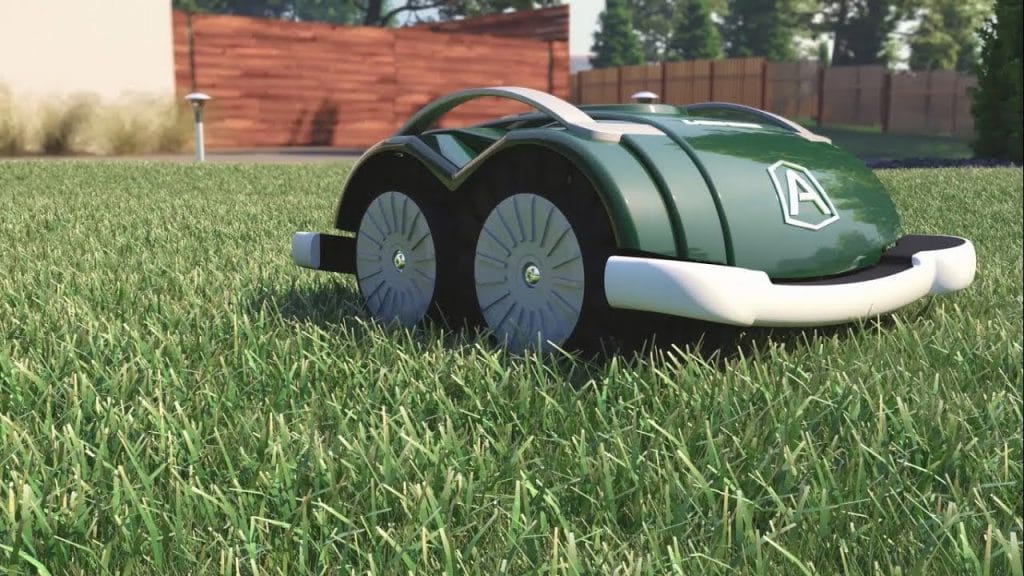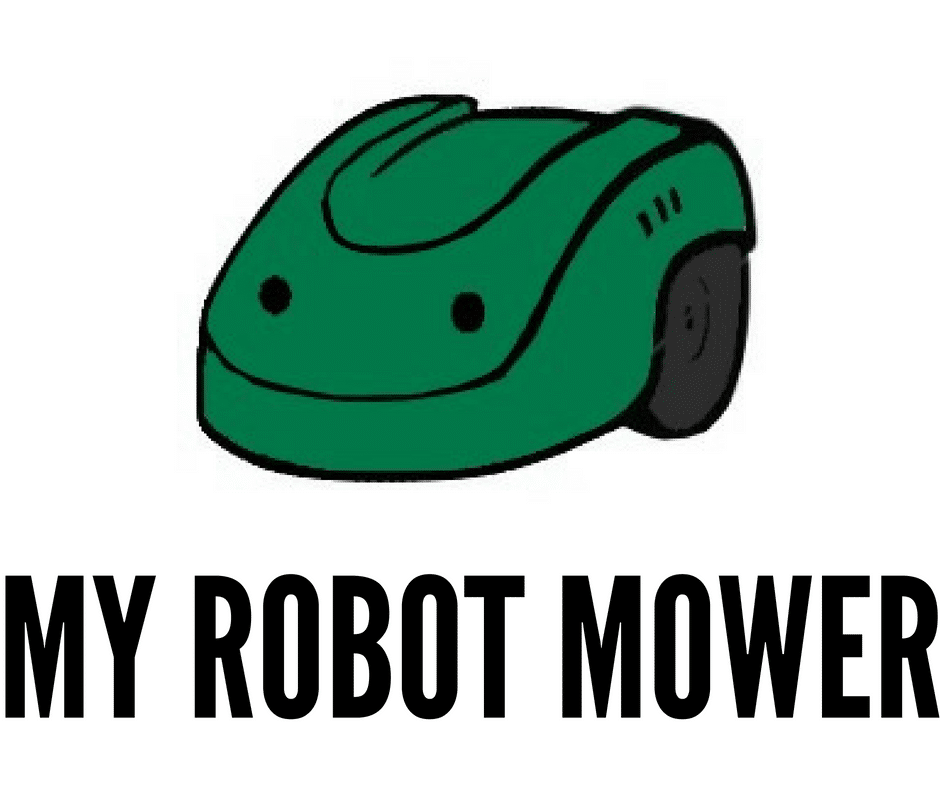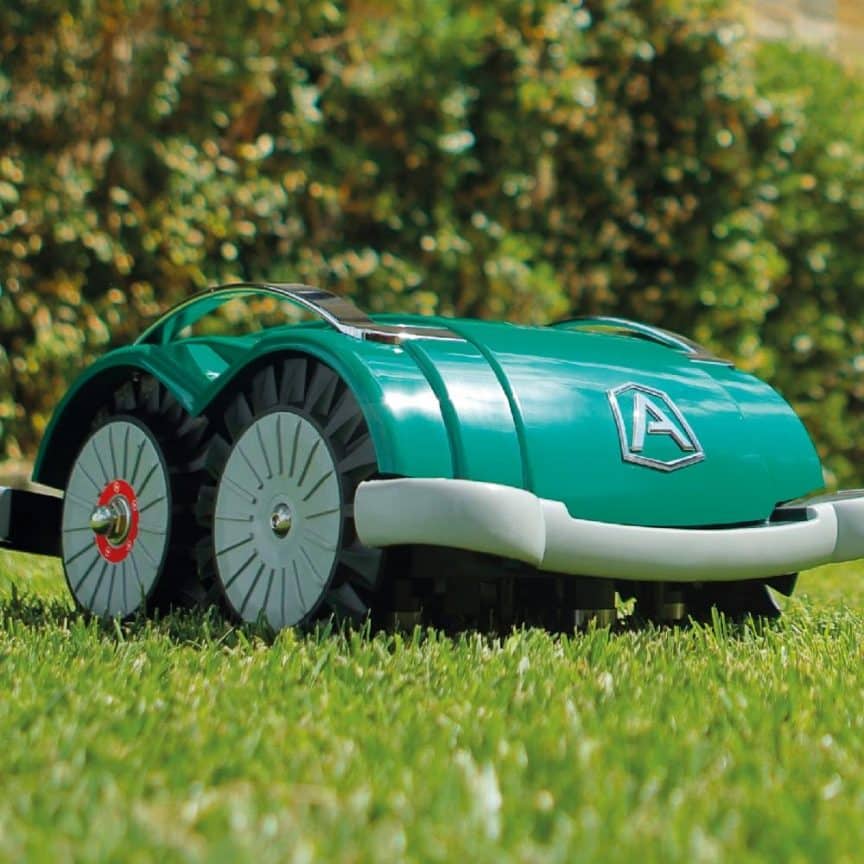The worst thing about getting a new robot lawn mower is the installation process.
The prospect of an effortless, beautifully maintained lawn is so close, and yet you have to spend an afternoon meticulously positioning a perimeter wire around your garden. Surely there is a better way?
Unfortunately, all the best robot lawn mowers currently use a perimeter wire. There is currently only one robot lawn mower on the market that does not require
iRobot has announced a new robot lawn mower that will not require the installation of a perimeter wire, but there is currently no launch date.
A number of other robot lawnmowers that will not use perimeter wire have been announced, including Toadi and Segway Navimow. I hope to test these soon and will report my findings.
If you want to know which robot lawn mowers are worth getting, I’ve got a great article here.
Why Are there Not More Robot Lawn Mowers Without Perimeter Wire?
The problem arises due to the challenge of getting a robot to accurately navigate a lawn and identify the edge of your grass without some form of guide.
When I first started researching robot lawn mowers, I was quite disappointed to discover that the vast majority required the installation of a guide wire. Surely it can’t be that difficult to engineer a better solution?
The problem is not simply one of technology, but also of economics. The technology currently exists to make a robot lawn mower that does not require a perimeter wire. However, the cost and complexity of a machine, would put the price out of reach of the majority of the target customers and make it economically nonviable for the manufacturers.
A number of companies have successfully produced research prototypes using a variety of technologies which are superior to the robot lawn mowers available on the market today. When the technology matures and the price drops, this will filter through to commercial products.
For now, all the best robot lawn mowers use a perimeter wire, and I would strongly recommend you to go for one of these. The installation process is fairly easy and doesn’t take that long. It’s a small price to pay for having a reliable robot lawn mower to do the hard work of maintaining your lawn for you.
Development Of A Robot Lawn Mower Without Perimeter Wire
Multiple companies are developing new technology to replace the need for a perimeter wire in robot lawn mower installations. This is a major hurdle in the mass adoption of robot lawn mowers by consumers, as the negative aspects and installation of a perimeter wire puts many customers off making a purchase. Below, I discuss the various technologies which are being developed and may be used to consign the perimeter wire to history.
1. Sensor Based Robot Lawn Mowers
The only commercially available robot lawn mower that does not use a perimeter wire is the Ambrogio L60 from Zucchetti Centro Sistemi SpA. This robot lawn mower uses sensor based technology to tell the difference between grass and other materials. It has a ring of humidity sensors on the underside of the mower which detect the difference between the humidity of the grass and other materials.
When the mower reaches the edge of the grass, it detects the change in humidity between the grass and a hard surface. It is then prompted to stop and move in a different direction. This has advantages and disadvantages as a technology. It is relatively simple technology and has actually been around for quite a number of years. It has a low failure rate and works well most of the time.
However, it introduces a lot of limitations to the functioning of a robot lawn mower that uses this technology. For the humidity sensor to work correctly, your lawn cannot border a similarly humid environment, such as flower beds or ponds. The Ambrogio L60 would not accurately be able to detect this transition, and the mower would continue to drive off your lawn.
This technology may have a role in future robot lawn mowers, but it is likely to be used in combination with other systems, to increase accuracy and edge detection.
2. GPS Based Lawn Mowers.
GPS technology is incorporated in quite a number of robot lawn mowers today, including models from Ambrogio, Husqvarna and Robomow. However, it is not used for boundary detection at present due to insufficient accuracy.
Consumer GPS accuracy is only sufficient to detect the position of a robot lawn mower to within a few metres. This is nowhere near sufficient for a robot lawn mower to accurately detect the edge of your lawn.
Development and implementation of newer GPS systems, as well as increases in processing power of low power computer chips, will lead to improvements in accuracy over the next few years. A number of technologies are in the implementation phase which will lead to accuracy improving to within a few centimeters.
Today, GPS in robot lawn mowers is used to provide data for smart apps, so that users can monitor and adjust the performance of the robot lawn mower. It also has an important role in robot mower security, as you can track the location of your robot lawn mower if it is stolen. This technology will definitely be used in future robot lawn mowers as the pace of improvement, low cost and ubiquitous nature of GPS means that it is an attractive option for companies.
3. Beacon Based Robot Lawn Mowers.
The company behind the popular robot vacuum cleaner, iRobot, has been rumoured to be developing a range of robot lawn mowers for a number of years. A patent filed by the company in 2016 has highlighted a system of location beacons that would be sited in your garden and would provide a localised, higher accuracy version of GPS.
This seems like a reasonable solution, as similar systems are currently used for their range of indoor cleaning and vacuuming robots. In combination with more conventional collision detection and avoidance systems, would probably result in quite an effective navigation system which would eliminate the need for a perimeter wire.
4. Vision Based Systems
Vision sensors are an attractive option for robot lawn mowers for a variety of reasons. Visual based systems can be used for more than boundary detection. A visual based navigation system could be used to detect grass requiring a cut and for identifying turf problems to be highlighted to the user. There have been a number of research and manufacturing prototypes which have shown excellent promise in this area, but no company has yet comercialised the technology.
I would highlight this option as one that is highly likely to be incorporated into robot lawn mowers in the future, as there is considerable overlap with other autonomomous vehicles. There is considerable investment and research into using visual navigation systems for self driving cars, which will inevitably be incorporated into other consumer technology.
Overview Of The Ambrogio L60 Robot Lawn Mower

As the only robot lawn mower without perimeter wire currently on the market, it may be useful to give you an overview of the pros and cons of this. It has a unique position within the robot lawn mower market, as there is no other model that it directly compares to.
The Ambrogio L60 is a good option for people who have a small lawn which is entirely bordered by path or wall. It requires minimal setup and no perimeter wire.
Unfortunately, the Ambrogio L60 has quite a number of drawbacks, which make it unsuitable for a lot of lawns. It is only rated for lawns up to 200 square meters and there are quite a number of limitations to the type of lawn that it will work on. The lawn must be bordered by either path or walls. The width of paving surrounding the lawn must be at least 25cm, to give the mower adequate room to detect the change in humidity and change direction.
The Ambrogio L60 has a number of other drawbacks including the fact that it will not return to a charging station when it runs out of battery. This means that every time you want to use the Ambrogio l60, you must bring it out to your lawn and set it working. It will then cut the lawn for approximately two hours before running out of battery. This is certainly better than manually mowing the lawn yourself, but falls far short of the capabilities of other robotic lawnmowers.
I hate to be overly negative about a robot lawn mower which is clearly pushing the limits of what can clearly be done with the current technology. However, I would strongly recommend resisting the temptation to buy this model, to avoid installing a perimeter wire, as I think you will ultimately be disappointed with this purchase.
There are multiple robot lawn mower models on the market that are significantly better value, which will mow a much larger lawn. Even for very tiny lawns, the Flymo 1200R is at least 40% cheaper and will work for all lawn configurations. I’ve written a review and guide to the Flymo 1200R here.
Main Advantages and Disadvantages of the Ambrogio L60
Advantages
- Minimal Setup. Just charge and go.
- Provides 2 hours operation on a battery charge
- Able to handle slopes up to 50% gradient.
- Four wheel drive, for additional traction
Disadvantages
- Only suitable for small gardens
- Your lawn must be completely bordered by paved areas or wall. If your lawn borders a flowerbed or pond, this mower will not be suitable.
- Will not automatically return to a charging station
- Must be manually started to begin cutting your lawn
If you’d like to learn a bit more about robot lawn mowers, and which ones are worth buying, I’ve written a useful article explaining all you need to know.

